![]()
(Ito ay talumpati ni Dr Claudio, miyembro ng executive committee, sa ika-19 anibersaryo ng partidong Akbayan noong Enero 20, 2017.)
***
Nang imbitahan akong magsalita [dito], agad akong pumayag. Karangalan para sa akin ito. Nguni’t ilang araw na akong tulala.
Una, hindi ko naman kayang panindigan ang 19 na taon ng Akbayan; 7 taon pa lamang akong miyembro. Pangalawa, sapul nang maging miyembro, napansin kong magkaiba ang ilang teorya ko sa ilang miyembro, mga lider, at founder ng Akbayan.
Matagal akong nawala sa mga pulitikal na pakikbaka at sa halip ay nakibaka para sa karapatang sekswal at reproduktibo. O di kaya’t mas mabuting sabihin, na nawala ako sa mga pakikibakang pangunahin at pangkalahatan ayon sa mga dating teorya. Sapagka’t sa aking pananaw ang mga kilusan para sa kababaihan, karapatan ng mga LGBT, para alagaan ang kalikasan atbp, ay pantay sa mga tinatawag na batayang pagkilos para sa lupa, sa karapatan ng manggagawa, sa pagwasak ng imperyalismo at burukrata-kapitalismo.
Ang pagliban ko sa mga sentrong pulitikal ay dala ng panahon ngunit dala rin ng pagkadisilusyon sa mga teorya ng mga puwersang kaliwa. Bago tayo tumuloy, lilinawin ko lamang na ang ibig kong sabihin sa salitang “kaliwa” ay ang lahat na binabansagan ang sarili nila ng terminong ito – yaong mga miyembro ng CPP-NPA-NDF, yaong handang makipag-alyado sa atin basta lamang hindi sila madungisan ng pultika natin, yaong mga alyado natin, at tayo na rin mismo.
Siguro ang kuwento ng aking pagkabigo sa pulitika ay pareho lamang ng kuwento ng marami sa inyo. Di ba’t ito ang isa sa mga dahilan na nabuo ang Akbayan? Ngunit ang natutuhan ko nang ako’y sumali sa Akbayan ay, kahit tayo’y lumisan na sa mga dating grupo, iba-iba pa rin ang naging pakahulugan natin sa pagiging rebolusyonaryo o sosyalista.
Teorya
Sa puntong ito, dapat lamang na ako’y magpakumbaba. Nakatayo ako rito hindi dahil nanaig na ang aking mga pananaw at teorya sa Akbayan. Nandito ako dahil sa kakulitan ko – at dahil hindi ako umaalis, nagtatampo, at nagpapaka-diva – ay naisip ninyo na maaari naman siguro akong pakinggan. Sa dahilan lang na ito ako nanaig sa aking pulitika. Hindi ako mapanghusga dahil ang teoryang pinanghahawakan ko ay isang teoryang handang tanggapin ang hilig, hangarin, at kagustuhan ng kapwa. Mamaya tatalakayin ko sa inyo kung bakit hindi ito nangangahulugan na isakripisyo ang ating mga prinsipyo at “anything goes” na lang.
Kaya rin naman ako nakadikit pa rin sa Akbayan ay nakikita ko ang lakas ng isang partido na handang makinig sa mga suwail at makulit. Nakakita ako ng pag-asa dahil tanda ito ng isang bagong pulitika na akin ngayong pinaniniwalaan. Ang pulitikang ito ay iba sa pilosopiyang dialektiko na minana natin kay Marx. Nguni’t hindi lang ang pilosopiyang dialektiko ang tradisyon ng sosyalismo. At ang ibang pilosopiyang ito ang tila umaayon sa aking realidad at mga hangarin ngayon.
Sa isang article ko sa Rappler, ipinaliwanag ko ang kakaibang pananaw kong ito. Ipinaliwanag ko kung bakit mahalaga pa ring panindigan ang atin koalisyon sa pamahalaang Aquino. Ingles ang sinulat ko kaya’t pinasasalamatan ko si Kasamang Bernie Larin sa kanyang pagsalin:
Para madaling maunawaan, tatawagin kong pulitika ng “either / or” ang pulitika ng dayalektiko. Ito ay paniniwalang kung hindi ka kakampi, ikaw ay kaaway; kung hindi ka sosyalista, ikaw ay kalaban. Dalawa lang din ang pagpipiliian: konsensiya ng isang nilamon na ng sistema o konsensiya ng isang purong progresibo. Ngunit may ibang pampulitikang pilosopiya para sa mga progresibo.
Muli para sa madaling pag-unawa, tatawagin ko ang mga pampulitikang pilosopiyang ito na “pulitika ng gayundin, ng pagdagdag, at saka s'ya nga pala.” Hindi katulad ng “either/or” o ng dayalektiko na dapat laging may proseso ng tunggalian at resolusyon, ang pulitika ng “gayundin” ay nagbibigay diin sa ebolusyon.
Ang tawag ni Foucault dito ay pinapalitan ang dayalektikal na lohika ng istratehikong lohika: ‘Ang istratehiya ng lohika ay hindi nakatutok sa mga kontradiksyon sa iisang simplistiko at payak na larangan at umaasam ng resolusyon ng mga ito sa pamamagitan ng pag-iisa. Ang gamit ng istratehikong lohika ay upang hanapin ang posibleng koneksyon sa mga magkakaibang termino kahit manatili pa silang magkakaiba.’”
Dahil sa pagbabago ng aking pilosopiya sa pakikibaka, inaamin ko ngayon, guilty ako sa napakaraming kasalanan. Hindi ko na pinipili kung anong isyu ang bibigyan ng prioridad sapagka’t sa akin walang herarkiya ang mga isyu at pakikibaka. Hindi na rin malinaw sa akin kung ano ang proletaryado at sino-sino ang mga ito. Sa karanasan ko, marami sa mga nagsasabing sila ay proletaryado ay gusto lamang magyabang, agawin ang kapangyarihan, ipagpilitan na unahin ang mga hangarin at kagustuhan ng kanilang grupo o sektor.
Sa aking karanasan, ang politika na tinatanggap ang kagustuhan ng bawat grupo ay isang pulitikang malawak. Isang pultikang nakakahimok sa karamihan. Isang pulitikang galing sa pakikiisa at hindi ipinipilit na maging magkakapareho.
Isa siyang pulitika na hindi mapanghusga. Hindi handang kagalitan ang kapwa na parang tayo ay napakabusilak. Isang pulitikang tinatanggap na lahat tayo ay produkto ng sistema, at mula sa loob ng sistema manggagaling ang bagong kaayusan. Ito ang ibig sabihin sa akin ng konspeto ng “hegemony” – na walang kaayusan na nasa labas ng kasalukuyang kaayusan. Walang kaayusan kung saan ang mga mulat na proletaryado ay nakatayo at pilit na hinihila ang masa at kasaysayan upang lumipat mula sa bulok na sistema tungo sa isang utopia. Natatawa nga ako sa mga Marxistang ganito mag-isip, sapagkat ipinagmamalaki nila ang kanilang materyalismo habang ilusyonado naman sila tungkol sa kanilang kinatatayuan sa hegemonya.
![]()
Pagsusuri
O siya, titigilan ko na ang tungkol sa teoryang pampulitika. Ang gamit naman sa akin ng teorya ay upang mapalawak ang mga porma, paraan, at larangan ng kinikilusan. Kaya’t pag-usapan natin ang naging lawak ng ating pagkilos sa Akbayan.
At tutukan ko ang bagong larangan na pinasok natin – ang pakikipagkoalisyon sa pamahalaang Aquino.
Siyempre pa, ang mga panginoong may hawak ng moralidad ang galit na galit sa atin dahil sumama tayo sa naghaharing kaayusan. May mga nagalit sa atin sapul sa simula, at may nagalit naman na pinanindigan natin ito hanggang sa kadulu-duluhan.
Alam na natin ang bintang: na ang rehimeng Aquino ay elitista, neo-liberal, at kasangkot ng mga panginoong may lupa. Sa katwirang dialektiko, ang sinumang sumanib ay samakatuwid kaaway. Maaari lamang sumama kung may makukuhang ganansya para sa mga batayang sektor ngunit dapat humiwalay kaagad kapag ubos na ang ganansya. At kapag hindi ka umalis, pansarili mo na lang ang iniisip.
Oh no, really?
Totoong wala pang sektor ng mahirap o ng panggitnang uri man lang ang naging mayor na partido sa bulok nating sistema.
Nguni’t hindi lahat ng elite ay magkakapareho. Hindi lahat ng panginoong may lupa o komprador-burges ay magkakapareho.
May paksyon ng elite na naghirap sa panahon ng diktadurya at naranasan nito ang kawalan ng pribilehiyo, kapangyarihan, at yaman. 'Ika nga ni Mila Aguilar, kahit sa simpleng Marxistang pananaw, kailangang tanggapin na ang kamulatan ng tao ay maaaring magbago dahil sa mga ganitong karanasan.
Sumama tayo sa LP ni PNoy dahil sila ang paksyon ng naghaharing uri na may higit na paninindigan para sa mga demokratikong karapatan. Maaaring hindi malalim ito dahil hindi naman sila sosyalista. Ngunit tiyak naman na malayo ito sa kasalukuyang presidente, na nagsasabing siya ay sosyalista, nguni’t 6,000 nang mahigit ang pinapatay na walang imbestigasyon o paglilitis. Tiyak na malayo ang demokrasya ni PNoy sa paulit-ulit na banta ng kasalukuyang presidente na magdeklara ng martial law dahil lamang naiinis siya sa mga kritiko niya. At kung patronage politics ang pag-uusapan, tiyak namang kikiling ako sa mga patron ni PNoy sa halip na tanggapin ang pagbabalik ng mga Marcos at ni GMA.
At nakakatiyak ako na ang mga pinatay sa ilalim ni PNoy ay kakaiba sa 6,000 na pinatay sa ilalim ni Pangulong Duterte. Hindi kinunsinti ni PNoy ang patayan nung panahon niya. Totoo, may impunity ang mga landlords, warlords, at druglords nung panahon niya. Ngayon at noon, palpak ang mga pulis sa paghuli ng mamamatay-tao. Ngunit ang impunity ng pulis ngayon ay galing mismo sa Malacañang at sa mga salita ng Presidente na binibigyan sila ng layang pumatay sa mga umano’y nanlaban. At yaong mga nagbubulag-bulagan na lamang ang magsasabing walang kinalaman ang mga pulis sa mga naglipanang death squads. Iba ang walang political will. Iba ang isang taong hindi kayang kontrolin ang lokal na mga pulitiko at mga pulis. Iba ang isang presidenteng sinusuportahan at kinukunsinti ang patayan.
Sa ilalim ng gobyerno ni PNoy at mga gobyernong katulad niya – na kung gusto ninyo ay tawaging “elite but liberal democratic somewhat” – may pag-asa pang umayos ang pulis. Sa ilalim ng kasalukuyang administrasyon, hindi ko na maiisip kung saan pupulutin ang PNP matapos silang magpadanak ng ganitong kadaming dugo.
Naririnig ko na ang trolls: dilawan ang Akbayan! Kakampi ni PNoy. Para namang pagkasama-sama ni PNoy at busilak si PDu30. Para namang lahat nang hindi naniniwala sa drama nilang mahusay si Pdu30 at palpak si PNoy ay LP. At parang ang LP ay biglang naging kuta ng mga demonyong trapo. Ano'ng tingin nila sa PDP-Laban? O di kaya Lakas o di kaya NP o PMP? Hindi ba’t lahat naman ng tradisyunal na partidong pulitikal ay pugad din ng mga trapo?
Saan ka ba nakakita ng panahon kung saan nagbabayad ang naghaharing grupo ng mga BPO upang murahin ang mga kritiko nito sa social media? Kailan pa tayo nagkaroon ng sitwasyon na ang gobyerno mismo ang naghahanap ng paraan na pag-awayin ang mga tao at himukin ang prejudice natin sa isa’t isa – laban sa mga “disente” (sinuman 'yon) o mainstream media (sinuman 'yon) o mga intelektwal (kung galit talaga sila sa mga intelektuwal, pumunta sila sa Cambodia na ngayon pa lamang umaahon sa pagpatay ni Pol Pot sa lahat ng intelektuwal tulad ng mga guro at iba pang propesyonal). Higit sa lahat, galit sila sa LP, sinuman ang mga 'yon, dahil – pasubali na sa mga kagalang-galang na miyembro ng LP na nandito – hindi ko na rin alam kung sino ang LP ngayon.
Galit din sila sa mga nanawagan ng pagbibitiw ni PDu30 tulad ni Loida Nicolas Lewis. Sedition daw. Di ba’t nasa Konsitusyon ng Pilipinas ang pagbibitiw? Di ba’t sa lahat ng demokrasya sa mundo ang pagbibitiw ay isang panawagan ng mga mamamayan sa kanilang mga lider na sa tingin nila ay walang kakayanan o integridad na mamuno? Di ba’t may pag-intindi na kapag nanawagan ka ng pagbibitiw sa isang lider, nangangahulugang tiwala ka pang mayroon siyang delikadesa at kakayahang isakripisyo ang kanyang kapangyarihan para sa sariling integridad? Naalala ko pa ang panahon na hindi mo puwedeng punahin ang presidente dahil sedisyon na kaagad ito. Ang panahon na iyon ay ang martial law ng diktador na si Marcos.
Idaragdag ko pang ngayon pa lang ako nakakita ng isang administrasyong ipinagmamalaki pa ang kawalan nila ng respeto sa kababaihan. Ngayon pa lang ako nakakita ng administrasyon na inaatake ang pagkababae ng mga kritiko at tinuturuan ang publiko na karapatdapat ang ganitong klaseng kabulastugan.
At kapag sumalungat ka sa mga defenders, ang lakas pang sabihin sa iyong ikaw ang hindi pumapayag sa malayang pagpahayag ng damdamin. Linawin natin. Sa isang demokrasya hindi dissent ang sumang-ayon sa makapangyarihan at sambahin si PDu30. Ang maging oposisyon sa gobyerno, 'yan ang dissent. Ang mga kritiko ang siyang may karapatan sa higit na proteksyon. Hindi ang mga trolls and defenders.
Idagdag pa natin sa kritisismo ng rehimeng ito ang paggamit ng lahat ng seksismo, kasinungalingan, black propaganda, at kapraningan upang protektahan ang sarili. Oo, may diperensya ang paksyon ng mga elite. At ang naghaharing paksyon ngayon ay ang pinaka-reaksyonaryo. Ang tema ng anibersaryo natin ay “ipaglaban ang demokrasya.” Ngunit sa panahon ngayon, dapat ipaglaban ang simpleng lohika, ang simpleng pakikipagkapwa.
At hindi naman mas progresibo ang kasalukuyang administrasyon sa mga pang-ekonomiyang patakaran. Walang pagbabago. Ang pangakong tapusin na ang “endo” ay naging paghahanap na lamang ng “win-win’ solution sa pagitan ng employer at manggagawa. Narinig na natin yan!
At huwag nating kalimutan na, tulad din ng ibang trapo, isa-isa nang naglalaho ang pangako. End drugs in 6 months. Bokya. Solve criminality in 6 months. Kalabasa. Solve traffic problems? Wala lang.
Pagpapalakas
Sabagay, tapos na ang panahon na tinatawag tayong reaksyonaryo dahil lang sumanib tayo sa gobyerno. Yaong mga mahilig na tumawag sa atin na coopted ay nakikisali naman ngayon sa gobyerno. Ang mga pinakamatindindi ang galit sa Akbayan ang siyang unang sumanib.
Kaya ano kaya ang pamantayan ngayon ng pagiging coopted? Dahil ba sa pansariling interes lang natin nung nakipagkoalisyon tayo, habang para sa masa ang pakikipagkoalisyon nila ngayon?
Ang masasabi ko lang ay, nang tayo ay nakipagkoalisyon sa elitistang paksyong Aquino, wala tayong yabang na ang ating ginagawa ay para sa bayan lamang at hindi para sa sarili rin. Bilang isang partido, pinagsisikapan nating maiangat ang mamamayan, ngunit hindi tayo nagkakamaling isipin na tayo ang masa at lahat ng gawin natin ay para sa masa. Hindi tayo nagkakamaling isipin na tayo lang ang may puso para sa masa. Ow, c’mon. Lahat ng tao, kahit mga rebolusyonaryo, ay kumikilos para rin sa sarili. Ang kawalan ng integridad ay kapag itinatago natin, pati na sa ating sarili, ang mga motibong personal.
Dapat ba hindi tayo makikisama sa mga tradisyunal na partido at politiko habang hindi tayo ang nagdidikta ng tamang patakaran at programa? Kailan naman mangyayari 'yon? Kapag tayo na ang mayorya? At paano mangyayari 'yon kung hindi tayo nakikikoalisyon kapag may pagkakataon at kapag ang higit na progresibong paksyon ng elite ang makakasama natin?
Malinaw at tapat ang hangarin nating baguhin ang bulok na sistemang pulitikal ng Pilipinas sa pakikilahok sa mga eleksiyon, sa pagpapanalo ng kapangyarihan sa iba’t ibang sangay ng burokrasya, sa pakikitungo sa ibang politiko. Tapat tayo dahil hindi tayo lumalahok sa sistema upang pabagsakin ito at agawin ang kapangyarihan sa pamamagitan ng extra-constitutional na paraan tulad ng ilehitimong pagdeklara ng martial law o armadong pakikibaka. Hinding-hindi tayo ang seditious, anupaman ang pagiging oposisyon natin.
Balak nating magpalakas at maging isang tunay na partidong pulitikal. Isang partidong hanggang ngayon ay hindi pa nakikita sa kasaysayan ng Pilipinas. Isang partidong may platapormang magbibigay ng lupa sa magsasaka, trabaho, benepisyo at proteksyon sa manggawa, respeto sa karapatan ng mga kababihan, LGBT, IPs at lahat ng nasa laylayan. Isang partidong wawakasan ang korupsyon. Isang partidong ipaglalaban ang mga karapatang pantao at tatangklikikin ang demokrasya.
Balak natin maging isang partido na may kakayahang ipatupad ang mga hangarin na ito sa isang lipunang may iba pang partido, may ibang mga pananaw, may mayorya at may tunay na oposisyon. Isang partidong mananalo lamang dahil tinatangkilik ito ng mga mulat na mamamayan na may tamang impormasyon at malalim na pagsusuri.
Sa kasalukuyan may plataporma tayo, may kakayahang ipaglaban ito, nguni’t halos walang kapangyarihang ipatupad ito. Kaya’t ang tanong ko ay, nakatulong ba sa atin na umusad patungong majority party ang ating pagkoalisyon? Nagbago ba ang ating plataporma at hangarin nang magkoalisyon tayo, at tinalikuran ba natin ito? Nagkulang ba tayo sa disiplina ng lumihis ang mga kasama? Natuto ba tayo kung paano magpatakbo ng gobyerno sakaling maging karapat-dapat tayong magpatakbo nito? Batay sa pamantayang ito, tama ba ang pakikipagkoalisyon natin sa gobyernong Aquino? Alam ninyo na ang sagot ng iba sa atin. Ang sagot ko ay, “oo,” more or less. Maraming mali, maraming bukol, maraming kapalpakan. Pero, oo pa rin.
Pag-asa
Kaya’t pag-usapan natin ang pag-asa. Mahirap ang katayuan natin ngayon. Nasa opposition tayo at kakaunti pa lamang ang kasama natin. At habang nasa panahon tayo ng kahinaan, kinukutya pa tayo ng iba dahil hindi raw natin pinangungunahan o kayang pangunahan ang laban. Sa kabilang banda, tinitira tayo ng mga makapangyarihan dahil tutol tayo sa EJKs, sa war on the poor na tinatawag nilang drug war, sa war on women na tinatawag nilang “being friendly with the VP” o “investigating Senator De Lima.” Tutol tayo sa sapilitang paglibing kay Marcos sa Libingan ng Mga Bayani.
Kung lumala pa ang pasismo, kung magdeklara ng martial law, tiyak na ibibilang tayo sa oposisyon. At kung ngayon pa lang ay tinatawag nang sedition ang democratic and principled opposition, ano pa kaya kung martial law na ulit?
Huwag lang tayong bibitiw sa prinsipyo at sa isa’t isa. Huwag tayong magduda na hawak natin ang tamang plataporma. Tuluyan tayong magpakabaduy sa platapormang ito, na ang ibig kong sabihin ay seryosohin natin ito, di tulad ng trapo parties.
Asahang hindi sa lahat ng panahon ay mamamayagpag ang kasinungalingan, ang poot, diskriminasyon, pagkakahati-hati. Lilipas din ang panahong ginagawang demonyo ang ilang tao at nanawagan ang may kapangyarihan na saktan o patayin sila. Alam na natin ang ilan sa mga diumanong demonyo – drug addict, reaksyonaryo, komunista. Taktika ng mga diktador na ipatanggap sa atin ang kamatayan ng mga kinamumuhian upang palawakin ang kanilang kapanyarihan, upang isuko natin ang karapatang pantao. Taktika ng mga pasista ang hatiin ang mamamayan at palawigin ang poot at galit upang pumayag tayong gamitin ang mga kamay na bakal upang maiayos ang gulo. Mahilig ang mga pasista sa away at giyera dahil ibebenta nila ang sarili bilang solusyon at tagapagtanggol. Ito ang lohika ng either/or. Ang lohika ng “dialectics and moral outrage.”
Nguni’t matatalo ito ng isang pulitika ng “and also” na nakasalalay sa hindi maubos at hindi makaahong pasyon ng masa.
Tumagal man o bumagsak kaagad ang namamayagpag na mga killer na ito, matatapos din ang kanilang panahon. 'Yan ang hindi matatakasang leksiyon ng kasaysayan. At kapag dumating ang panahon, maalala ng taumbayan ang mga nanindigan para sa demokrasya, karapatang pantao, due process, sa malaya at mahinahong pagpapalit ng opinyon, sa proteksyon ng dissent at buhay. Kapag nanumbalik ulit ang paghanap ng katotohanan, ang pakikipagkapwa, at ang pakikiisa, aalalahanin ito ng taumbayan.
Sa panahong darating maaalala nila kung sino-sino ang indibidwal at grupong nanindigan. Maaalala nila hindi ang ating kahinaan, hindi ang ating kawalan ng kapasidad, kawalan ng tiyaga, o kawalan ng lakas at katalinuhan.
Ang maaalala nila ay kasama nila tayo. Maalala nilang hindi natin hinangad na pangunahan sila sa pamamagitan ng pagpataas sa sarili o sa pagdikta sa kanilang mga kagustuhan. Maaalala nilang hindi natin hinusgahan ang kahinaan nila at hindi natin nilimitahan ang kanilang mga kakayahan. Maaalala nila na hindi tayo ang gumawa ng hidwaan at gulo sa hanay ng mga inosente anupaman ang pagiging oposisyon natin, anupaman ang pagkakaiba natin ng saloobin. Maaalala nilang hindi tayo ang pumatay, at kahit kailan, kahit tayo na ang nasa kapangyarihan, hindi tayo papatay.
Kung tama ang paghawak natin ng pulitika, maaaring maisip ng masa na hindi lang tama ang ating pagususuri at teorya, tama rin ang ating mga kaparaanan.
Kung maharap natin ang mga panibagong hamon, maaaring ang Akbayan ay maging isang partido na kayang makiisa sa lahat ng iba’t iba at walang hangganang aksyon ng masa, habang nangangarap at umaaksyon din para sa isang malaya, mapayapa, at maunlad na Pilipinas. – Rappler.com
![]()
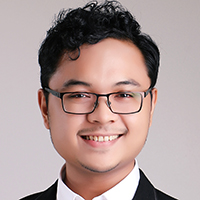 In his latest effort to fulfill his campaign promises, President Rody Duterte recently ordered a crackdown on people involved in so-called “5-6” moneylending.
In his latest effort to fulfill his campaign promises, President Rody Duterte recently ordered a crackdown on people involved in so-called “5-6” moneylending.

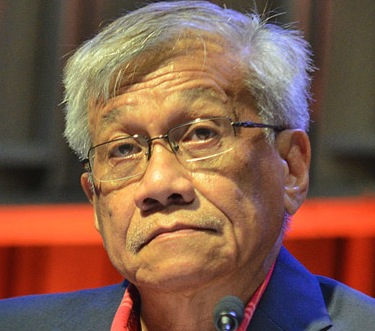 Two names explain Prime Minister Shinzo Abe's current tour of Southeast Asia:
Two names explain Prime Minister Shinzo Abe's current tour of Southeast Asia: 



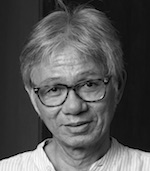

 Sometime last year, my usual trip to the pharmacy to refill my medicine cabinet became a cause for worry. My birth control pill was out of stock.
Sometime last year, my usual trip to the pharmacy to refill my medicine cabinet became a cause for worry. My birth control pill was out of stock.










![[Dash of SAS] Ana Santos](http://static.rappler.com/images/ana-santos-150.png) Calypso plastic. It is same plastic that is used to make iced candy. That's what the teen fathers had used as condoms.
Calypso plastic. It is same plastic that is used to make iced candy. That's what the teen fathers had used as condoms.


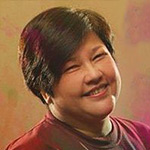

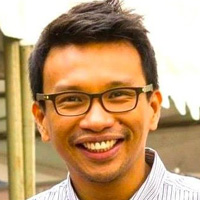



 The latest scandal in the Philippine National Police (PNP) – of cops
The latest scandal in the Philippine National Police (PNP) – of cops 


 Recently, the talks between the Government of the Philippines (GRP) and the National Democratic Front of the Philippines (NDFP) have been in the news as peace negotiators gather in Rome for the third round of the negotiations which started last July 2016.
Recently, the talks between the Government of the Philippines (GRP) and the National Democratic Front of the Philippines (NDFP) have been in the news as peace negotiators gather in Rome for the third round of the negotiations which started last July 2016.
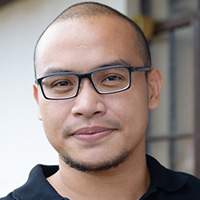 On January 24 Kabayan Partylist
On January 24 Kabayan Partylist 
